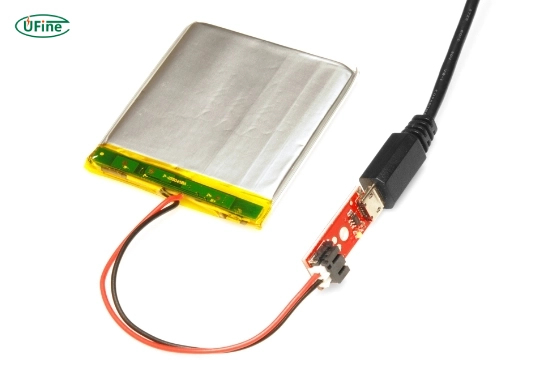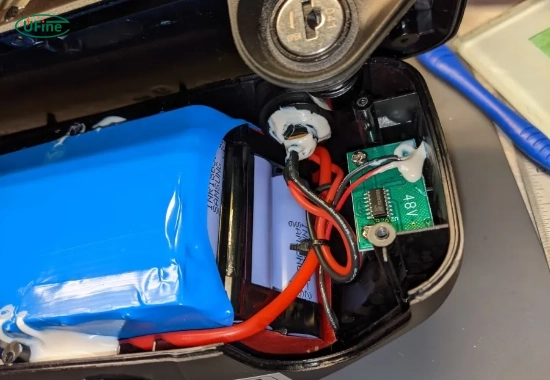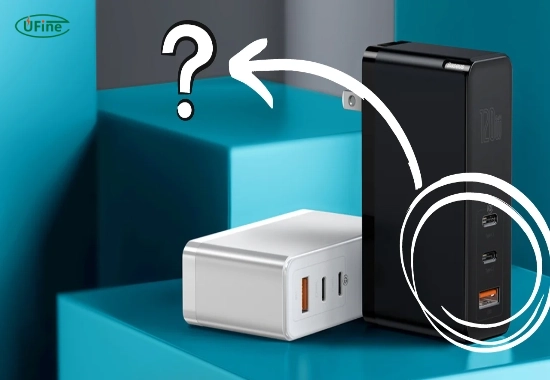In today’s world, battery ports are everywhere—from the smartphone in your pocket to the electric vehicles on the road. With so many devices relying on batteries, understanding how they work and their components is crucial. One important yet often overlooked part is the battery port. So, what exactly is it, and how does it affect your battery’s performance?
This article will dive into battery ports, explaining how they work and their impact on performance. Whether you’re a tech enthusiast or use batteries daily, understanding this component can help you optimize your devices and extend battery life.
Part 1. What is a battery port?
A battery port is the point of connection where a battery interfaces with a device or charger. It is typically found at one end of the battery and designed to connect to the electrical system that powers a device or recharges the battery.
In simpler terms, it’s the physical connection point through which the battery transfers energy. It allows the flow of electrons between the battery and the device, facilitating the charging and discharging processes.
Types of Battery Ports
Battery ports can come in various forms, depending on the type of device and battery. Some common types include:
- USB ports: Common in smartphones and portable chargers, USB-C or micro-USB ports allow devices to be charged quickly and efficiently.
- Round barrel connectors: These are often found in larger devices like laptops and some power tools.
- Pin connectors: Found in certain specialized batteries, pin connectors offer a secure and reliable connection.
- Terminal posts: Typically used in larger batteries, like car batteries, which are connected to the vehicle’s electrical system via cables.
Part 2. The role of battery ports in battery performance
The battery port’s design and quality heavily influence a battery’s performance. If the port is poorly designed or damaged, it can significantly reduce the energy transfer efficiency between the battery and the device.
How Battery Ports Affect Charging Speed
One of the most noticeable impacts of the battery port on performance is the charging speed. A well-designed port allows faster charging by ensuring a more stable and efficient power transfer from the charger to the battery. For instance, USB-C ports support higher charging speeds than traditional USB-A ports.
Impact on Battery Life
A damaged or loose port can cause inconsistent charging and lead to overcharging or undercharging, which might shorten the battery’s lifespan. Over time, this can reduce the battery’s capacity and result in shorter usage times.
Part 3. Common issues with battery ports
Battery ports aren’t immune to wear and tear. As frequently used components, they can face several problems that affect overall performance. Here are some common issues:
Loose Connections
One of the most common problems is a loose connection. Over time, the port may become worn, or the internal connectors may fail, causing the battery to charge intermittently. This can lead to frustration and possible damage to the device.
Dirt and Debris
Battery ports can accumulate dirt, dust, and other debris, especially if not adequately covered. This can block the port, making it difficult for the charger to connect with the battery. Regularly cleaning your battery port can help prevent this issue.
Corrosion
Exposure to moisture or humidity can lead to corrosion in the port. Corrosion can cause rust on the connectors, making it hard for electrical signals to flow and, ultimately, reducing the charging efficiency.
Part 4. Why battery port quality matters?
The quality of the battery port can directly influence several aspects of the battery’s performance, including:
Safety
A poor-quality port can increase the risk of overheating, short-circuiting, and even battery explosions. High-quality ports are designed with safety mechanisms to protect the battery from such issues.
Efficiency
The port is crucial for efficient energy transfer from the charger to the battery. If the port is well-made, energy flows smoothly, improving charging times and optimizing overall performance.
Part 5. How to maintain and care for your battery port?
Maintaining your battery port is crucial for keeping your device in top shape. Here are a few tips to ensure your port stays clean and functioning properly:
- Regular Cleaning: Use a soft brush or compressed air to clean your battery port regularly. This will help clear out any debris and prevent any blockages.
- Avoid Excessive Force: Be gentle when inserting or removing charging cables. Forcing a cable into the port can cause internal damage, affecting the connection.
- Protect from Moisture: Protect your devices from water or high-humidity areas, as moisture can cause corrosion inside the port.
Part 6. Battery port vs. charging port: Are they the same?
While many people use the terms “battery port” and “charging port” interchangeably, they differ slightly. The battery port refers to the connection point on the battery itself. In contrast, the charging port is where the charger plugs into a device to charge the battery.
In most cases, the charging and battery ports are located in the same spot, but technically, they serve different roles.
Part 7. How do battery ports affect different battery types?
Different battery types have different kinds of ports. The design and functionality of these ports can impact the battery’s performance.
Lithium-ion Batteries
Lithium-ion (Li-ion) batteries, commonly used in smartphones and laptops, typically have micro-USB or USB-C ports. These ports are designed for high efficiency and fast charging.
Lead-Acid Batteries
Lead-acid batteries, which are often used in vehicles, use terminal posts as their primary connection points. The quality and cleanliness of the terminal connections can impact these batteries’ performance.
Nickel-Cadmium Batteries
Nickel-cadmium (NiCd) batteries often have pin connectors and require solid connections to ensure proper charging. A poor connection can lead to incomplete charging cycles, affecting battery performance.
Part 8. Battery port compatibility across devices
Different devices often require different types of ports, and compatibility between the battery port and the device’s charging system is key for optimal performance. For instance, a USB-C charging port is incompatible with a micro-USB charging port, and vice versa.
When choosing a charger or battery, it’s essential to ensure compatibility between the battery port and the device’s charging system to maximize efficiency and avoid potential damage.
Part 9. How to choose the best battery port for your device?
Choosing the right battery port depends on the type of device you are using and your charging needs. If you prioritize fast charging, USB-C ports are a great option. Barrel connectors or terminal posts may suit devices requiring long-term durability.
Part 10. FAQs
-
What is a battery port?
A battery port is the connection point on a battery where energy is transferred between the battery and the device it powers. -
Can a damaged battery port affect battery performance?
A damaged or loose battery port can lead to inconsistent charging, shorter battery life, and poor performance. -
How do I clean my battery port?
Use a soft brush or compressed air to gently remove dirt and debris from your battery port. -
Are battery ports and charging ports the same?
No, battery ports refer to the connection point on the battery, while charging ports are where the charger connects to the device. -
Can battery ports be repaired?
A technician can often repair or replace battery ports if they malfunction.
Related Tags:
More Articles

How to Improve Battery Performance Using a Voltage Regulator Lithium?
Learn how lithium voltage regulators improve battery performance, extend lifespan, and optimize efficiency in devices and systems.
What Is an Oxide Battery and How Does It Differ from Other Types of Batteries?
Oxide batteries are a unique technology with potential for various uses. Learn about their functions, advantages, and how they differ from other types.
Is a Tesla with LFP Batteries Right for You?
Learn why Tesla's LFP battery is a smart choice for electric vehicles. See how it offers efficiency and reliability. Dive into the details!
The Truth About 12V 200Ah LiFePO4 Battery Lifespan
Wondering how long a 12V 200Ah LiFePO4 battery lasts? Discover its lifespan and tips to extend it. Learn more today.
Are Li Polymer Batteries Safe for Your Devices?
Worried about Li Polymer batteries catching fire? Learn about risks, safety tips, and prevention methods. Stay safe and informed today.






